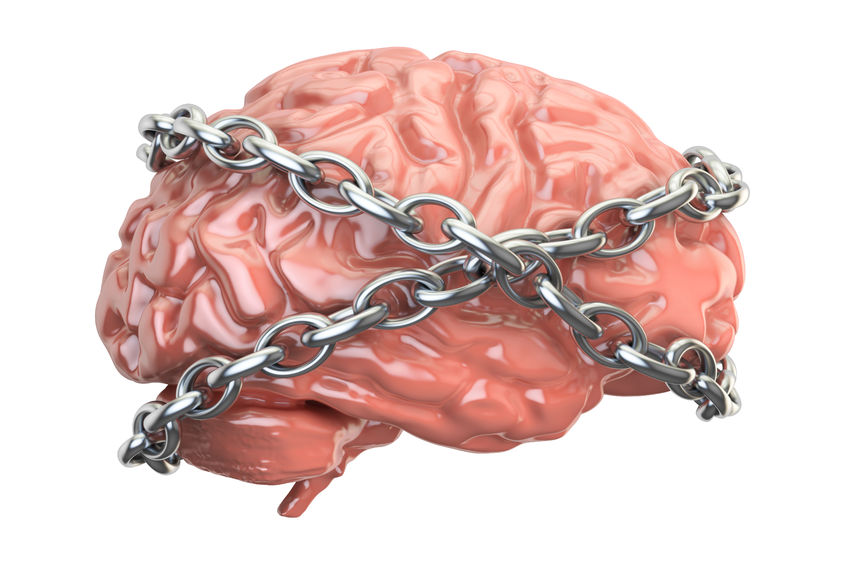Reminiscence Therapy For Alzheimer’s and Dementia Patients
In the United States there are more than 5,000,000 people which suffer from Alzheimer’s. Those who are afflicted with this disease are limited when it comes to therapy and possible healing methods for improving quality of life. If only there can be some therapeutic environment which could mine great memories they once experienced. It may be a childhood memory of going to the fair stimulated by the smell of popcorn. The objective would be to reawaken the neurons and synapses that absorbed those everlasting moment. Prior to the symptom of Dementia setting in, these folks were able to recall pleasurable events of the past. Disease then takes its toll on the brain which loses functionality of tapping into the wellsprings of positive emotions.
 The human brain is the most complex organ in the body with over 100 billion neurons present in the brain. In the medial temporal lobe there is a region called the limbic system which plays hosts to both positive and negative memories. Even though we as older adults may have a hard time recalling those experiences, they remain there. Its normal to forget and important for seniors to construct ways in bettering their memory. As memory gradually fails it’s because disease has stricken brain operations. Though the function of the brain has been severely impacted, the region where positive experience are stored is still fully intact. The analogy would be to a having a laptop computer which won’t turn on but it’s hard drive still hosts all the pc files. Without a power source there is no way to access the information stored on that device. Similarly, Alzheimer’s affects the functionality of the brain and makes it extremely difficult to recall basics such as a family’s member name or whom they are. Families of people afflicted with Alzheimer’s continually look for new types of therapies to ease the emotional pain. If only there was a way to reach deep into the limbic system to bring back those pleasant memories.
The human brain is the most complex organ in the body with over 100 billion neurons present in the brain. In the medial temporal lobe there is a region called the limbic system which plays hosts to both positive and negative memories. Even though we as older adults may have a hard time recalling those experiences, they remain there. Its normal to forget and important for seniors to construct ways in bettering their memory. As memory gradually fails it’s because disease has stricken brain operations. Though the function of the brain has been severely impacted, the region where positive experience are stored is still fully intact. The analogy would be to a having a laptop computer which won’t turn on but it’s hard drive still hosts all the pc files. Without a power source there is no way to access the information stored on that device. Similarly, Alzheimer’s affects the functionality of the brain and makes it extremely difficult to recall basics such as a family’s member name or whom they are. Families of people afflicted with Alzheimer’s continually look for new types of therapies to ease the emotional pain. If only there was a way to reach deep into the limbic system to bring back those pleasant memories.
Many Alzheimer’s organizations have exhausted resources on finding a cure and I hope by the time you come across this article there will be one. But now we have to face the fact that there are over 5,000,000 people suffering from Alzheimer’s and many more have symptoms of Dementia. Memory care homes in Ohio and across the USA are able to provide the care and improve quality of life for these patients. Few have yet to come across a full scale environment through the use of reminiscence therapy, referred to as RT.
Reminiscence Therapy, RT refers to the use of tangible and intangible items which are able to generate thoughts that were seeded through positive experiences in the past. This type of therapy could be done by a family member with a piece of clothing, photographs, household items, recipes, music, and sound recordings. Another option would be to introduce the idea of reminiscence therapy at a independent living center meetup. Then the staff could do its own research and create a schedule for this program. A hand full of nursing homes in the UK have begun RT and were fascinated with the results. Those who suffer from Alzheimer’s and Dementia have had their personalities emerge by going through RT.
One of the residents in a local memory care facility named Martha ran her fingers through an old style dress dating back to the 50’s. Just then the caregiver saw her eyes light up and she began reminiscing about a wedding in 1958 where she was the first bridesmaid. Martha, was recalling her picking out a gown with a similar ruffle style for the wedding. She began recalling the names of her friends when she was a teenager that all shared a special relationship with this bride. After the session had ended, Jenny the therapist gave a call to the family to tell them what just occurred. As you can imagine the family could not believe that Martha who could not recognize her own children was able to reminisce about a wedding in 1958.
Another effective way to treat these patients is through the inspiration of nostalgic memories. The Merriam Webster’s dictionary provides two definition for nostalgia: 1 – the state of being homesick 2 – a wistful or excessively sentimental yearning for return to or of some past period or irrecoverable condition. Most people affiliate the term homesick with negativity. But when we deal with individuals who are suffering from a brain diseases it’s actually very encouraging. Caretakers who are able to evoke nostalgic memories will help improve the mood and memory of the patient. Nostalgia based therapies are also used to help people of all ages managed depression.
 Both reminiscence and nostalgia treatments have fascinating affects and can help stimulate empathy and social contentedness. Spirits of Alzheimer’s patients are in a low state and can be determined by their facial appearance. These older adults feel lost, hopeless, and lonely due to the lack of normal brain functionality. Through one of these two therapies patients can tap into good memories and begin to have an identity. Knowing who you are is the greatest contributor to self confidence which impacts mood. American philosopher, Wayne Dyer said it best “You cannot be lonely if you like the person you’re alone with“. Those who suffer from Alzheimer’s don’t know who the person they are with and thereby are socially isolated.
Both reminiscence and nostalgia treatments have fascinating affects and can help stimulate empathy and social contentedness. Spirits of Alzheimer’s patients are in a low state and can be determined by their facial appearance. These older adults feel lost, hopeless, and lonely due to the lack of normal brain functionality. Through one of these two therapies patients can tap into good memories and begin to have an identity. Knowing who you are is the greatest contributor to self confidence which impacts mood. American philosopher, Wayne Dyer said it best “You cannot be lonely if you like the person you’re alone with“. Those who suffer from Alzheimer’s don’t know who the person they are with and thereby are socially isolated.
Tom Christian’s wife Grace, has Alzheimer’s and he has played witness to the ailing effects that this disease has on the brain. The regression does not happen gradually but rather it comes in steep declines predictably. The George G. Glenner Alzheimer’s Family Center is located Chula Vista, CA. Unlike any other organization it has brought to life an environment prototype which uses reminiscent therapy.
The Glenner Center has partnered with the San Diego Opera Scenic Studios and Douglas Pancake Architects to develop the first Adult Day Care Center featuring reminiscence therapy. Town Square is an indoor stimulated urban environment, designed with interactive storefronts that utilize reminiscence therapy to trigger past memories. Alzheimer’s patients such as Grace can visit Town Square and be taken care of while receiving therapy. This provides both an amazing experience for the patient and opportune break for the caregiver to take care of their needs. Town Square is setup to facilitate reminiscence because the storefronts and facades will trigger memories. The visitor will then feel that they are in a familiar and comfortable place. Patients could walk around and visit a museum, theater, diner or a Little Italy restaurant. All of these venues have been decorated to bring back memories which visitors may have experienced when they were younger. Such an environment plays a role in being able to capture those parts of their life and memories which are still intact and strong. These patients will be able to function, competent, comfortable and most importantly feel good about themselves.
One can visit Town Square at 2765 Main Street in Chula Vista, CA 91911. Always call (800) 736-6674 before you go to make sure that the facility is open to visitors. The last thing you want is to take a loved one who suffers from memory loss only to find the facility is closed.
The Source of Nostalgia and Reminiscence Therapy
Constantine Sedikides had been a professor at the University of North Carolina for many years. In 1999 he became affiliated with the University of Southampton in the UK, where he took on the role of professor of social and personality psychology. A few weeks after making the transatlantic move he noticed that he had very strong feelings for North Carolina. At one point the professor was recalling the summer evenings that were spent on Chapel Hill with friends. Constantine’s major was in psychology, and he became the subject of a fascinating study in how physical emotions can be triggered by events of the past. Ever since the revelation in 1999, nostalgia therapy has become his primary focus. Places like Town Square were only developed due to Constantine Sedikides revealing this amazing phenomena where memories of the past can actually generate positive physical feeling in the present.
How To Introduce Nostalgia and Reminiscence Therapy In Our Facility?Local Ohio senior services can take advantage of reminiscence therapy by learning more about techniques which stimulate positive feelings of the past. What the Glenner Center has created in Chulla Vista, CA is both creative and extraordinary but it comes with a heavy price tag of three million dollars. Most small memory care facilities in Ohio can’t even dream of installing a Town Square. Senior healthcare organizations can begin by gathering pieces of history which is suitable for the age group of the resident. Many websites like eBay and Craigslist are filled with such products which people are looking to unload. Another option could be to use the family of the patient as a resource for clothing, pictures, and other items which might be in storage or lying around the house. Always make sure to ask the family if this is a donation or merely on lend for the period of therapy.
